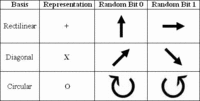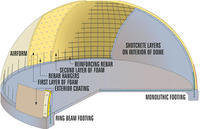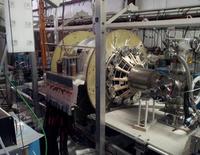-
Aging national power grid leaves U.S. vulnerable to storm-related outages
In parts of the United States where the grid system is “out in the open” and exposed to the elements — especially in our older cities — the risk increases for widespread power outages as a result of weather-related events, leading to lengthy, costly repairs.
-
-
Direct CO2 removal could lower costs of climate mitigation
Two broad strategies are typically offered to protect infrastructure from the consequences of climate change: reducing to emissions of CO2 into the atmosphere by using less fossil fuels, and mitigation (building sea walls, dams, and levees; changing building codes, etc.). Both approaches are costly. Scientists suggest that directly removing CO2 from the air could alter the costs of climate change mitigation. It could allow prolonging greenhouse-gas emissions from sectors like transport which are difficult, and thus expensive, to turn away from using fossil fuels.
-
-
House panel approves CISPA, angering privacy advocates
The U.S. House Intelligence Committee passed a cybersecurity measure by an overwhelming vote, a measure which privacy advocates dislike because, they argue, it does not protect the personal information of citizens.
-
-
DHS, international tech-crime investigative body, partners on cybersecurity
The High Technology Crime Investigation Association (HTCIA) said it would team up with DHS Stop. Think. Connect. Campaign’s National Network. The partnership will promote awareness of cyber security to industry, university, and government organizations nationwide.
-
-
Arsenic contamination in food and water supplies
After virtually eliminating arsenic as a useful tool for homicide, science now faces challenges in doing the same for natural sources of this fabled old “inheritance powder” that contaminates water supplies and food, threatening more than thirty-five million people worldwide.
-
-
A better single-photon emitter for quantum cryptography

In a development that could make the advanced form of secure communications known as quantum cryptography more practical, researchers have demonstrated a simpler, more efficient single-photon emitter that can be made using traditional semiconductor processing techniques.
-
-
Mississippi towns build tornado-proof domes

Following a devastating tornado two years ago, the town of Smithville, Mississippi, has started construction on a tornado-proof dome. The dome, to be built on the grounds of the local high school, will double as a gym and a storm shelter. Other towns in Mississippi have also begun their own dome projects.
-
-
Supercomputers allow for more realistic earthquake simulations
A team of researchers has developed a highly scalable computer code that promises dramatically to cut both research times and energy costs in simulating seismic hazards throughout California and elsewhere. The team performed GPU-based benchmark simulations of the 5.4 magnitude earthquake that occurred in July 2008 below Chino Hills, near Los Angeles.
-
-
Oregon citizens preparing for the Big One

A new study concludes that an earthquake of a magnitude 8.0 or above will strike off the coast of the state within the next fifty years. The Cascadia Fault, which runs from Northern California to British Columbia, Canada, causes a massive earthquake every 300 years or so, and the last time an earthquake hit the region was in the year 1700.
-
-
The opportunities offered by Smart Grid R&D
The U.S. aging power grid is evolving into a modern, “smart” energy distribution network, and with these changes comes a host of challenges for the research and development community, two new reports say.
-
-
Making concrete “greener”

Many factors determine the overall energy and environmental impact of concrete. Reducing the amount of portland cement, which reacts with water to bind all the sand, stone, and the other constituents of concrete as it hardens, provides the biggest opportunity. Portland cement manufacturing accounts for more than 5 percent of U.S. industrial carbon-dioxide emissions. In addition, the U.S. cement industry consumes 400 gigajoules of energy annually.
-
-
House Intelligence Committee to work on cybersecurity bill in camera
The House Intelligence Committee will meet next week in order to draft a cybersecurity bill, known as the Cyber Intelligence Sharing and Protection Act (CISPA), but will not allow media members or the public to sit in on meetings during the process.
-
-
Nuclear fusion could power a rocket to take humans to Mars

NASA estimates a round-trip human expedition to Mars would take more than four years using current technology. The sheer amount of chemical rocket fuel needed in space would be extremely expensive — the launch costs alone would be more than $12 billion. Now, astronauts could be a step closer to our nearest planetary neighbor through a manipulation of nuclear fusion, the same energy that powers the sun and stars.
-
-
Renewable energy could economically replace fossil-based energy in Australia
A carbon price of between AU$50 and AU$100 per ton of carbon dioxide would make coal-fired and gas-fired power in Australia less economical than renewable electricity. A new study says that all fossil-fuelled power stations in Australia’s National Electricity Market could be phased out and replaced economically and reliably with commercially available renewable energy technologies by increasing the carbon price to this “medium” level.
-
-
U.S. nuclear industry faces a wave of nuclear power station retirements
A wave of U.S. nuclear power station retirements is on the horizon. The typical design life of a nuclear power plant is 40 years. There are 104 nuclear power plants in the United States, and their average age is 34 years — only a few years short of, and fast approaching, their design life. Almost 30 U.S. commercial and research reactors already have started decommissioning. A $400 million is regarded as the bargain basement price tag for cleaning up a single reactor.
-
More headlines
The long view
Water Wars: A Historic Agreement Between Mexico and US Is Ramping Up Border Tension
As climate change drives rising temperatures and changes in rainfall, Mexico and the US are in the middle of a conflict over water, putting an additional strain on their relationship. Partly due to constant droughts, Mexico has struggled to maintain its water deliveries for much of the last 25 years, deliveries to which it is obligated by a 1944 water-sharing agreement between the two countries.
Trump Is Fast-Tracking New Coal Mines — Even When They Don’t Make Economic Sense
In Appalachian Tennessee, mines shut down and couldn’t pay their debts. Now a new one is opening under the guise of an “energy emergency.”
Smaller Nuclear Reactors Spark Renewed Interest in a Once-Shunned Energy Source
In the past two years, half the states have taken action to promote nuclear power, from creating nuclear task forces to integrating nuclear into long-term energy plans.
Keeping the Lights on with Nuclear Waste: Radiochemistry Transforms Nuclear Waste into Strategic Materials
How UNLV radiochemistry is pioneering the future of energy in the Southwest by salvaging strategic materials from nuclear dumps –and making it safe.
Model Predicts Long-Term Effects of Nuclear Waste on Underground Disposal Systems
The simulations matched results from an underground lab experiment in Switzerland, suggesting modeling could be used to validate the safety of nuclear disposal sites.
